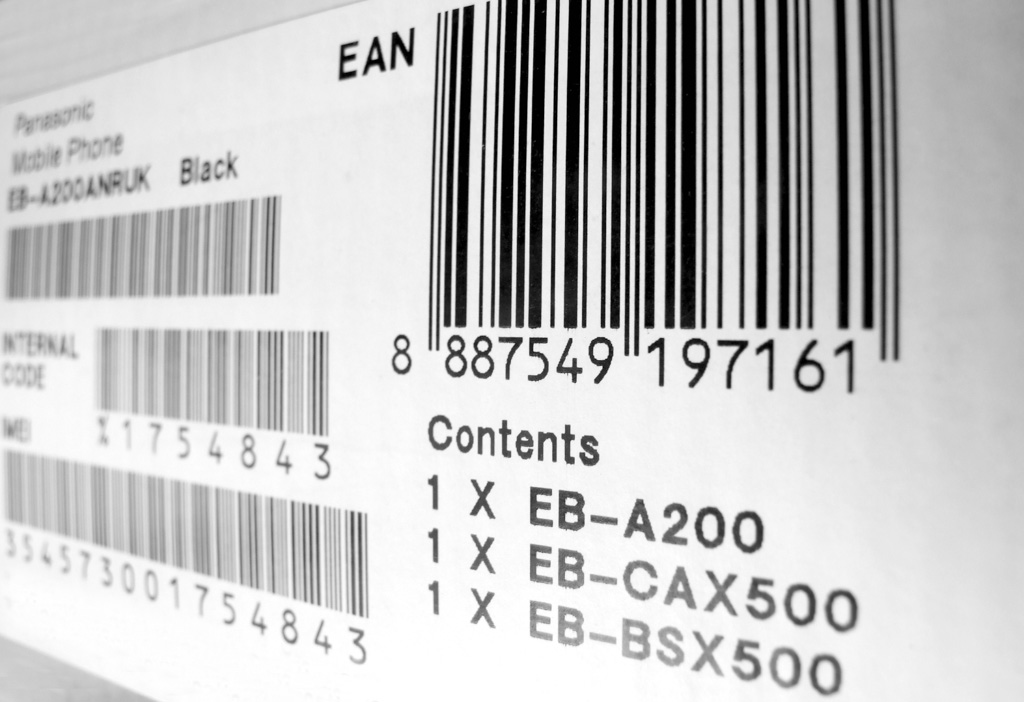Inventory management is a process for managing and locating objects or materials. It often relies upon barcode and radio-frequency identification (RFID) tags to provide automatic identification of inventory objects. In an academic study performed at Wal-Mart, RFID reduced out-of-stocks by 30 percent for products selling between 0.1 and 15 units a day. Inventory objects could include any kind of physical asset: merchandise, consumables, fixed assets, circulating tools, library books, or capital equipment. To record an inventory transaction, the system uses a barcode scanner or RFID reader to automatically identify the inventory object, and then collects additional information from the operators via fixed terminals (workstations), or mobile platforms.
Applications
An inventory management system may be used to automate an order fulfillment process. Such a system contains a list of orders to be received, and then prompts workers to pick the necessary items, and provides them with packaging and shipping details. An inventory system also manages inwards and outwards material of hardware. Real-time control may use wired, mobile terminals to record inventory transactions at the moment they occur. A wired LAN transmits the transaction information to a mobile network. Physical inventory counting and cycle counting are main features of many inventory control systems which can enhance the organization.

Inventory management is a science primarily about specifying the shape and percentage of stocked goods. It is required at different locations within a facility or within many locations of a supply network to precede the regular and planned course of production and stock of materials.
Inventory management software is a computer-based system for tracking inventory levels, orders, sales and deliveries. It can also be used in the manufacturing industry to create a work order, bill of materials and other production-related documents. Companies use inventory management software to avoid product overstock and outages. It is a tool for organizing inventory data that before was generally stored in hard-copy form or in spreadsheets. It is often associated with and is similar to distribution software.
The scope of inventory management concerns the fine lines between replenishment lead time, carrying costs of inventory, asset management, inventory forecasting, inventory valuation, inventory visibility, future inventory price forecasting, physical inventory, available physical space for inventory, quality management, replenishment, returns and defective goods, and demand forecasting. Balancing these competing requirements leads to optimal inventory levels, which is an on-going process as the business needs shift and react to the broader environment.
Inventory management involves a retailer seeking to acquire and maintain a proper merchandise assortment while ordering, shipping, handling, and related costs are kept in check. It also involves systems and processes which identify inventory requirements, set targets, provide replenishment techniques, report actual and projected inventory status and handle all functions related to the tracking and management of material. This would include the monitoring of material moved into and out of stockroom locations and the reconciling of the inventory balances. It also may include ABC analysis, lot tracking, cycle counting support, etc. Management of the inventories, with the primary objective of determining/controlling stock levels within the physical distribution system, functions to balance the need for product availability against the need for minimizing stock holding and handling costs.

Inventory management is primarily about specifying the size and placement of stocked goods. Inventory management is required at different locations within a facility or within multiple locations of a supply network to protect the regular and planned course of production against the random disturbance of running out of materials or goods. The scope of inventory management also concerns the fine lines between replenishment lead time, carrying costs of inventory, asset management, inventory forecasting, inventory valuation, inventory visibility, future inventory price forecasting, physical inventory, available physical space for inventory, quality management, replenishment, returns and defective goods and demand forecasting.
There are four basic reasons for keeping an inventory:
- Time – The time lags present in the supply chain, from supplier to user at every stage, require that you maintain certain amounts of inventory to use in this lead time. However, in practice, inventory is to be maintained for consumption during ‘variations in lead time’. Lead time itself can be addressed by ordering those many days in advance.
- Uncertainty – Inventories are maintained as buffers to meet uncertainties in demand, supply and movements of goods.
- Economies of scale – Ideal condition of “one unit at a time at a place where a user needs it, when he needs it” principle tends to incur lots of costs in terms of logistics. So bulk buying, movement and storing bring in economies of scale, thus inventory.
- Appreciation in Value – In some situations, some stock gains the required value when it is kept for a period of time – allowing it to reach the desired standard for consumption or production. For example; beer in the brewing industry
Special terms
- Stock Keeping Unit (SKU) is a unique combination of all the components that are assembled into the purchasable item. Therefore, any change in the packaging or product is a new SKU. This level of detailed specification assists in managing inventory.
- Stock-out means running out of the inventory of an SKU.
- “New old stock” (NOS) is a term used in business to refer to merchandise being offered for sale that was manufactured long ago but that has never been used. Such merchandise may no longer be produced anymore, and the new old stock may represent the only market source of a particular item at the present time.
Typology
- Buffer/safety stock
- Reorder level
- Cycle stock (Used in batch processes, it is the available inventory, excluding buffer stock)
- De-coupling (Buffer stock held between the machines in a single process which serves as a buffer for the next one allowing smooth flow of work instead of waiting for the previous or next machine in the same process)
- Anticipation stock (Building up extra stock for periods of increased demand – e.g. ice cream for summer)
- Pipeline stock (Goods still in transit or in the process of distribution – have left the factory but not arrived at the customer yet)

While accountants often discuss inventory in terms of goods for sale, organizations – manufacturers, service-providers and not-for-profits – also have inventories (fixtures, furniture, supplies, etc.) that they do not intend to sell. Manufacturers’, distributors’, and wholesalers’ inventory tends to cluster in warehouses. Retailers’ inventory may exist in a warehouse or in a shop or store accessible to customers. Inventories not intended for sale to customers or to clients may be held in any premises an organization uses. Stock ties up cash and, if uncontrolled, it will be impossible to know the actual level of stocks and therefore impossible to control them.
While the reasons for holding stock were covered earlier, most organizations usually divide their “goods for sale” inventory into:
- Raw materials – materials and components scheduled for use in making a product.
- Work in process (WIP) – materials and components that have begun their transformation to finished goods.
- Finished goods – goods ready for sale to customers.
- Goods for resale – returned goods that are salable.
- Stocks in Transit.
- Consignment Stocks.

Advantages
There are several advantages to using inventory management software in a business setting.
Cost savings
In many cases, a company’s inventory represents one of its largest investments, along with its workforce and locations. Inventory management software helps companies cut expenses by minimizing the amount of unnecessary parts and products in storage. It also helps companies keep lost sales to a minimum by having enough stock on hand to meet demand.
Increased efficiency
Inventory management software often allows for automation of many inventory-related tasks. For example, software can automatically collect data, conduct calculations, and create records. This not only results in time savings, cost savings, but also increases business efficiency.
Warehouse organization
Inventory management software can help distributors, wholesalers, manufacturers and retailers optimize their warehouses. If certain products are often sold together or are more popular than others, those products can be grouped together or placed near the delivery area to speed up the process of picking.
Updated data
Up-to-date, real-time data on inventory conditions and levels is another advantage inventory management software provides to companies. Company executives can easily access the software through a mobile device, laptop or PC to monitor current inventory numbers. This automatic updating of inventory records allows businesses to make informed decisions.
Data security
With the aid of restricted user rights, company managers can allow many employees to assist in inventory management. They can grant employees enough information access to receive products, make orders, transfer products and do other tasks without compromising company security. This can speed up the inventory management process and save managers’ time.
Insight into trends
Tracking where products are stocked, which suppliers they come from, and the length of time they are stored is made possible with inventory management software. By analyzing such data, companies can control inventory levels and maximize the use of warehouse space. Furthermore, firms are more prepared for the demands and supplies of the market, especially during special circumstances such as a peak season on a particular month. Through the reports generated by the inventory management software, firms are also able to gather important data that may be put in a model for it to be analyzed.
Disadvantages
The main disadvantages of inventory management software are its cost and complexity.
Expense
Cost can be a major disadvantage of inventory management software. Many large companies use inventory management software, but small businesses can find it difficult to afford it. Barcode readers and other hardware can compound this problem by adding even more cost to companies. The advantage of allowing multiple employees to perform inventory-management tasks is tempered by the cost of additional barcode readers.
Complexity
Inventory management software is not necessarily simple or easy to learn. A company’s management team must dedicate a certain amount of time to learning a new system, including both software and hardware, in order to put it to use. Most inventory management software includes training manuals and other information available to users. Despite its apparent complexity, inventory management software offers a degree of stability to companies. For example, if an IT employee in charge of the system leaves the company, a replacement can be comparatively inexpensive to train compared to the company using multiple programs to store inventory data.

Iggnition’s easy-to-use Cloud Inventory Management will provide you all the advantages without major initial capital investment.









